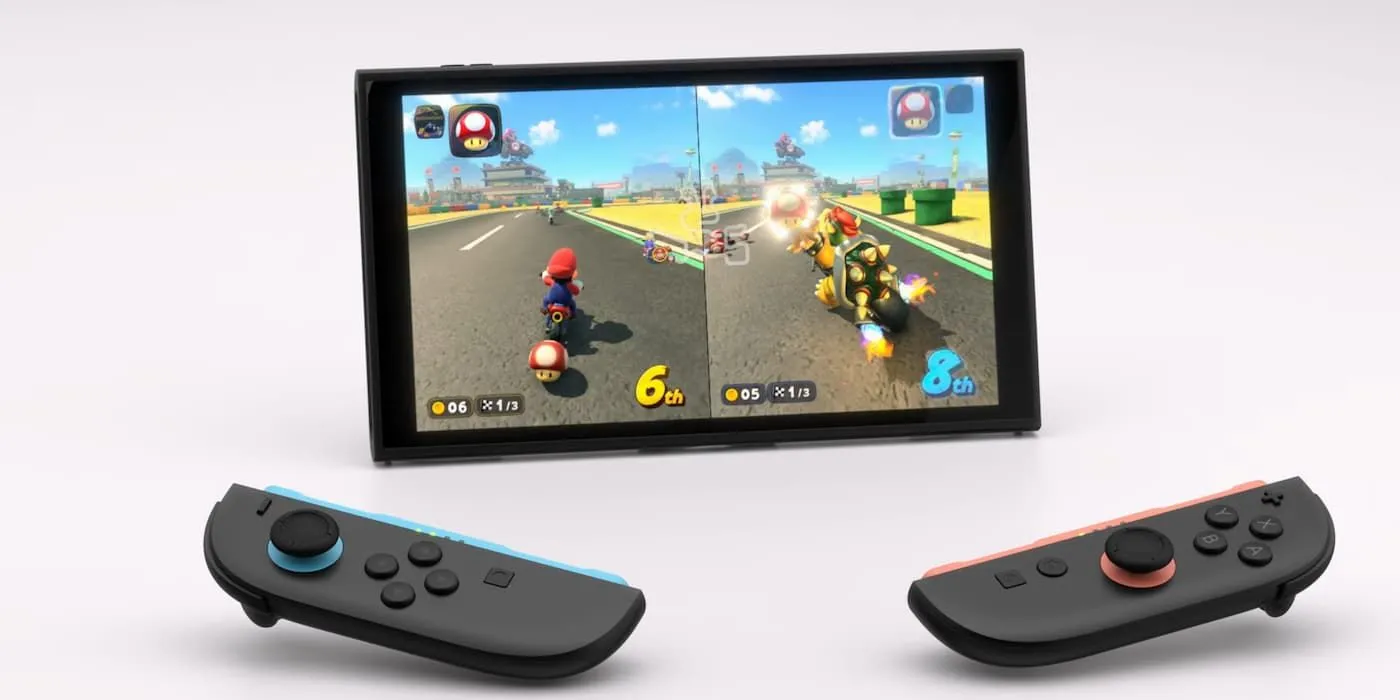
It was a remarkable week that left both the global economy and gaming communities reeling. President Donald Trump’s announcement of sweeping tariffs sent shockwaves through international markets and directly impacted one of the most anticipated product releases in the gaming industry: the Nintendo Switch 2.
Nintendo had set a release date for their new console on June 5, with a price tag of $450, or $500 for a special bundle including the latest Mario Kart game. Enthusiasts were poised to preorder in early May. However, the landscape changed abruptly by week’s end, with Nintendo pulling back, citing the need to evaluate the “potential impact of tariffs and evolving market conditions.” This announcement left gamers questioning the future cost and availability of the new console, which had already been perceived as pricey.

The Ripple Effects of Tariffs on Consumer Electronics
Shihoko Goto, a senior fellow at the Mansfield Foundation specializing in trade, highlighted the broader implications of the tariffs, noting, “It’s a pricing issue that is a direct response to the tariffs. This is just one example of one product from one company being hit by tariffs, and we’re going to see price increases all across the board.”
Nintendo, which had previously shifted some of its production from China to Vietnam to sidestep the first wave of tariffs under the Trump administration, now finds itself caught in a new tariff trap. The recent 46 percent tariff imposed on Vietnamese goods underscores a harsh reality for Nintendo and other companies that relocated operations to what they perceived as tariff-safe havens.
Global Trade Strategies and Consumer Prices
The strategy to move operations to countries like Vietnam was originally seen as a smart dodge from the tariffs on Chinese goods. Vietnam, a burgeoning hub for manufacturing consumer electronics, offered a lower-cost base for production. However, Trump’s targeting of nations with significant trade surpluses with the U.S. — under the belief that these countries are “cheating” America — has complicated the situation.

As tariffs inflate the costs of production and export, companies like Nintendo are left with no choice but to relay these increased costs to consumers. Daniel Ahmad, a gaming industry analyst, emphasized the impact on consumer choice, stating on social media platform X that “there’s going to be a lot of belt tightening on optional consumer goods, especially on consumer electronics.”
The Unrealistic Expectation of Onshoring
Trump’s vision of revitalizing American manufacturing by enticing companies to relocate their production to the U.S. faces significant practical challenges, particularly in the consumer electronics sector. Ahmad points out that establishing production facilities in the U.S. would be costly and time-consuming, potentially taking “four to five years to get a factory up and running.” Moreover, the components like GPUs needed for devices such as the Switch are predominantly manufactured abroad and would still be subject to tariffs, further inflating costs.
The prospect of onshoring production also stumbles over the reality of much higher labor costs in the U.S. compared to Vietnam, making the production of cost-effective, high-quality goods nearly impossible within the States.

A Crossroads for Global Trade and Gaming
The delay and potential price increase of the Nintendo Switch 2 is a microcosm of the broader challenges facing the global trade system and consumer markets today. As tariffs disrupt supply chains and inflate prices, both companies and consumers are forced to reassess their options, signaling a period of uncertainty and adjustment in the face of evolving economic policies.
